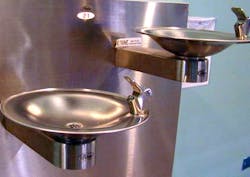Electrical Troubleshooting Quiz - June 10, 2014
You’ve been called in as a consultant to a facility with three problems.
1) Their electric bill is higher than it used to be. In an effort to fix this, they replaced their incandescent lamps with screw-in LED lamps. The facility manager says this hasn’t made a dent in the electric bill.
2) People are getting small electric shocks at the water fountains. You met with the HR manager about this, and he said it’s a frequent complaint.
3) The equipment failure rate seems high. The facility, though basically an office, has some light manufacturing and assembly. The machines used for that purpose are frequently under service.
Where do you start?
The LED lamps no doubt help, but changing out a few lamps won’t have a big effect on the electric bill. It’s probably worthwhile to change out all the lighting for an engineered LED lighting system, but that’s a project to pitch later.
The electric shocks indicate there is undesired current seeking a path back to the source. The fact the water fountains serve as this path means the facility has bonding deficiencies. Those deficiencies may also explain the equipment failure rate, especially if these are motor losses.
Low power factor may explain the high electric bill; use a power analyzer to see what you’re dealing with. You can also use that power analyzer to determine the integrity of the neutrals; this may reveal where that undesired current is coming from.
